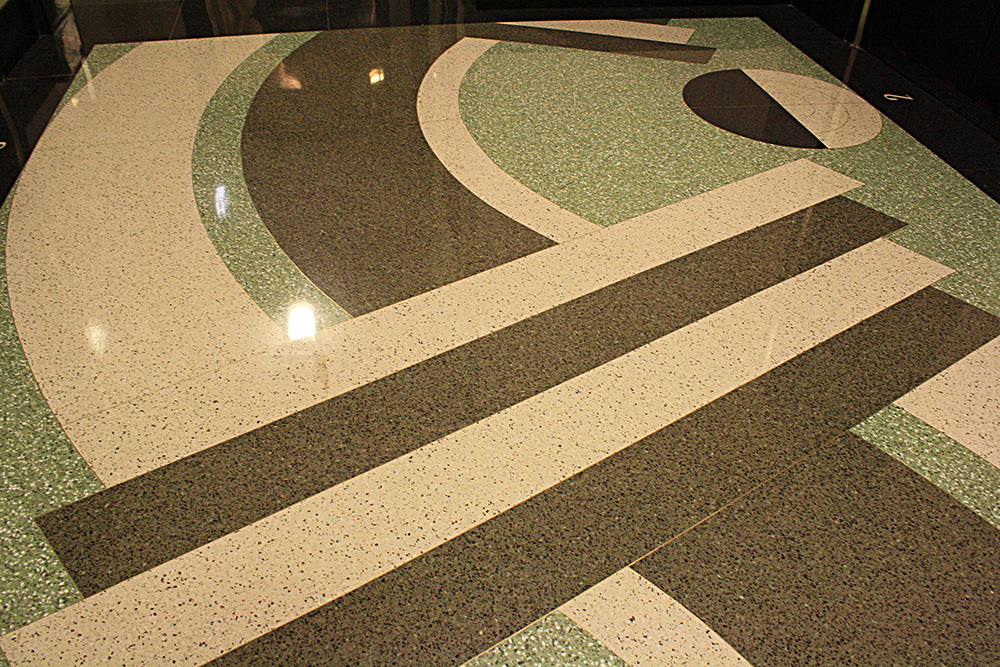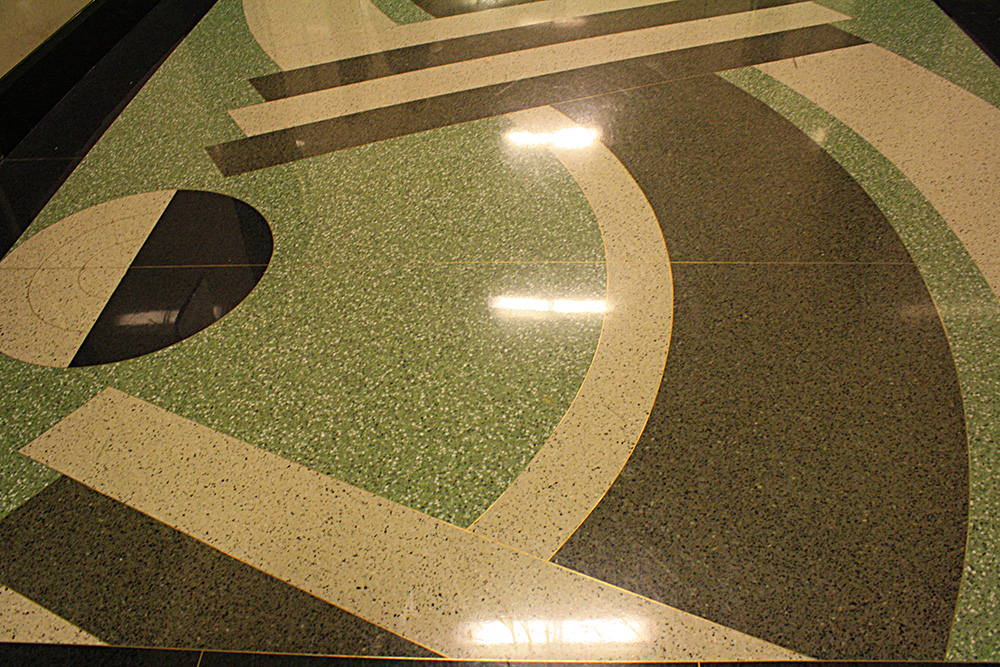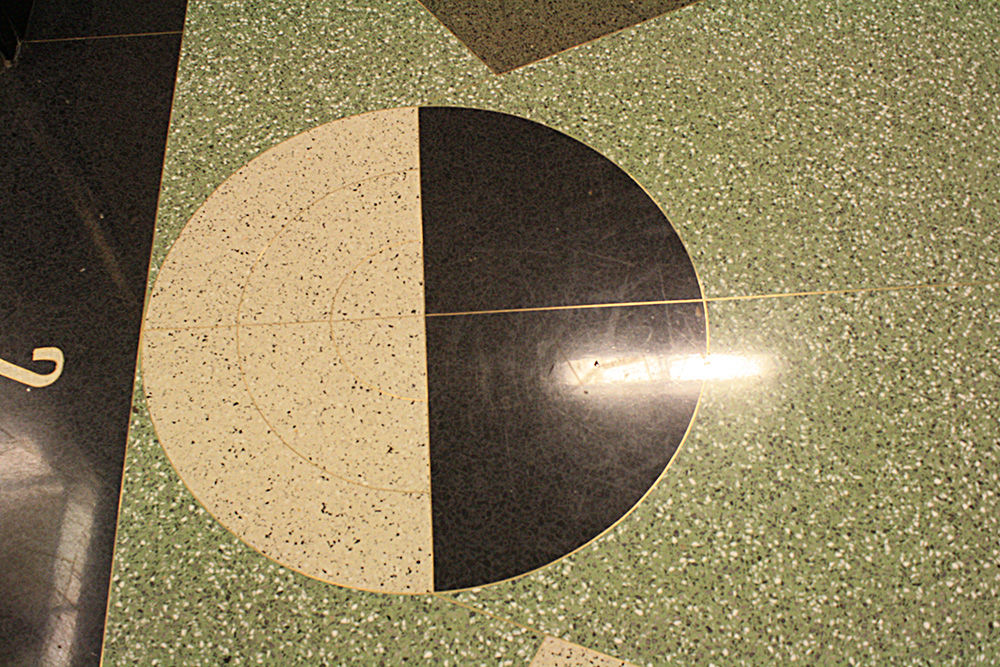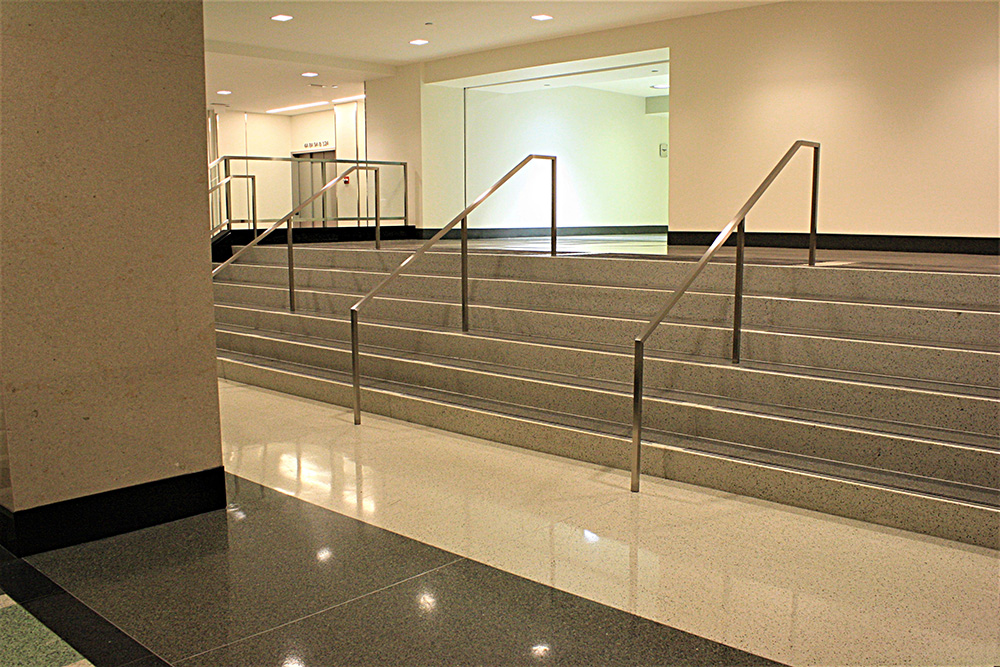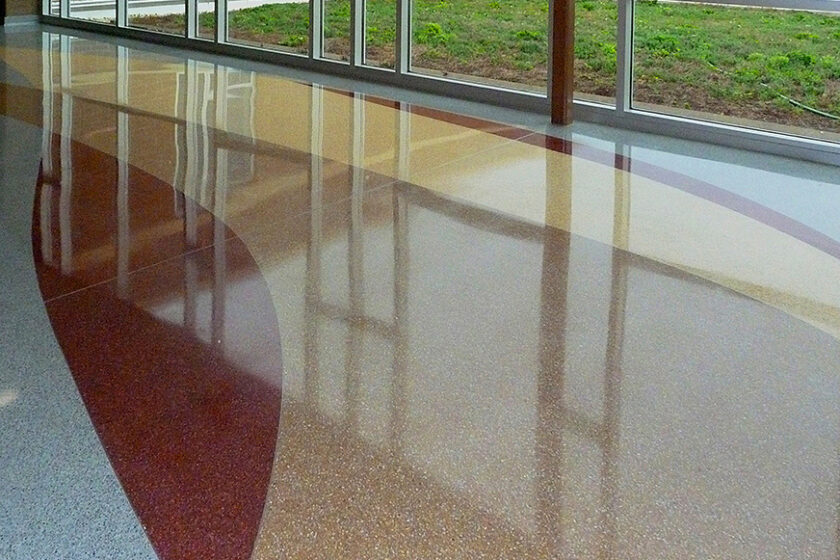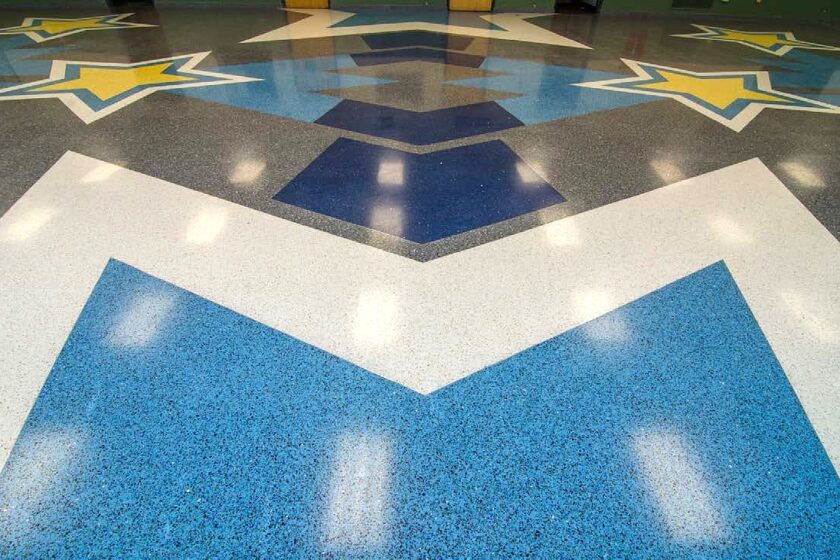Between 2012-2014, some $30 million was invested in upgrades to the 1930 building still known as the Chicago Board of Trade (CBOT), both a Chicago Landmark and National Historic Landmark, and listed on the National Register of Historic Places.
Today it is both a prime example of elegant historic preservation and a premium tenant location, with the addition of scalable infrastructure. With the building’s historic public spaces now expanded and accessible to the public once again, no trade-off is asked of either tenants or preservationists.
The project architect was Tomoo Fujikawa, principal and president of Fujikawa Johnson Gobel, the Chicago architectural firm responsible for the design of the CBOT’s 1997 east addition.
The building’s original 85-year-old traditional sand-cushion terrazzo floor in the first-floor lobby is now restored as the CBOT interior’s distinctive public face, with its striking Art Deco pattern of circles, arcs, and angles. Its presence was also expanded and complemented with the addition of 6,000 square feet of new 3/8-inch epoxy terrazzo in five colors. Indistinguishable from the original floors, the new floor is as opulent as the old classic terrazzo, which in turn still looks as fresh as the new.
“Terrazzo played its role well,” Mr. Fujikawa said. “It was certainly an economical material with lots of flexibility in design and in its ability to match colors and existing designs—in this case, matching old terrazzo with new.”
Beginning with the existing terrazzo as a template, the terrazzo contractor calculated circles, angles, and arcs with field measurements and transferred them onto a blueprint format. They submitted the design to the architect on CAD. The colors and lines of the new black-and-white second-floor lobby “are a riff on the original pattern,” Fujikawa explained.
To match the complex historic colors and aggregates with contemporary materials, contractors began by removing small sections of the historic floor. They developed blends of epoxy and aggregates to recreate the colors of the pieces. Because the original stone aggregates were mined from a quarry over 85 years ago, matches were no longer available as mining has continued. The process of trial-and-error sometimes took 15 to 20 rounds of samples to achieve an ideal match.
“These are natural products harvested from the earth,” explained Carmine Tucci, owner of Amici Terrazzo of Elk Grove Village, Ill., who was trained by his father and uncle and has worked with terrazzo for close to 30 years. “It’s hard enough even a couple of years later to match stone from a quarry, let alone when this much time has passed. The slight natural variances of terrazzo are actually an asset—no two floors are exactly alike. But getting a perfect match is a challenge because you’re dealing with Mother Nature.”
